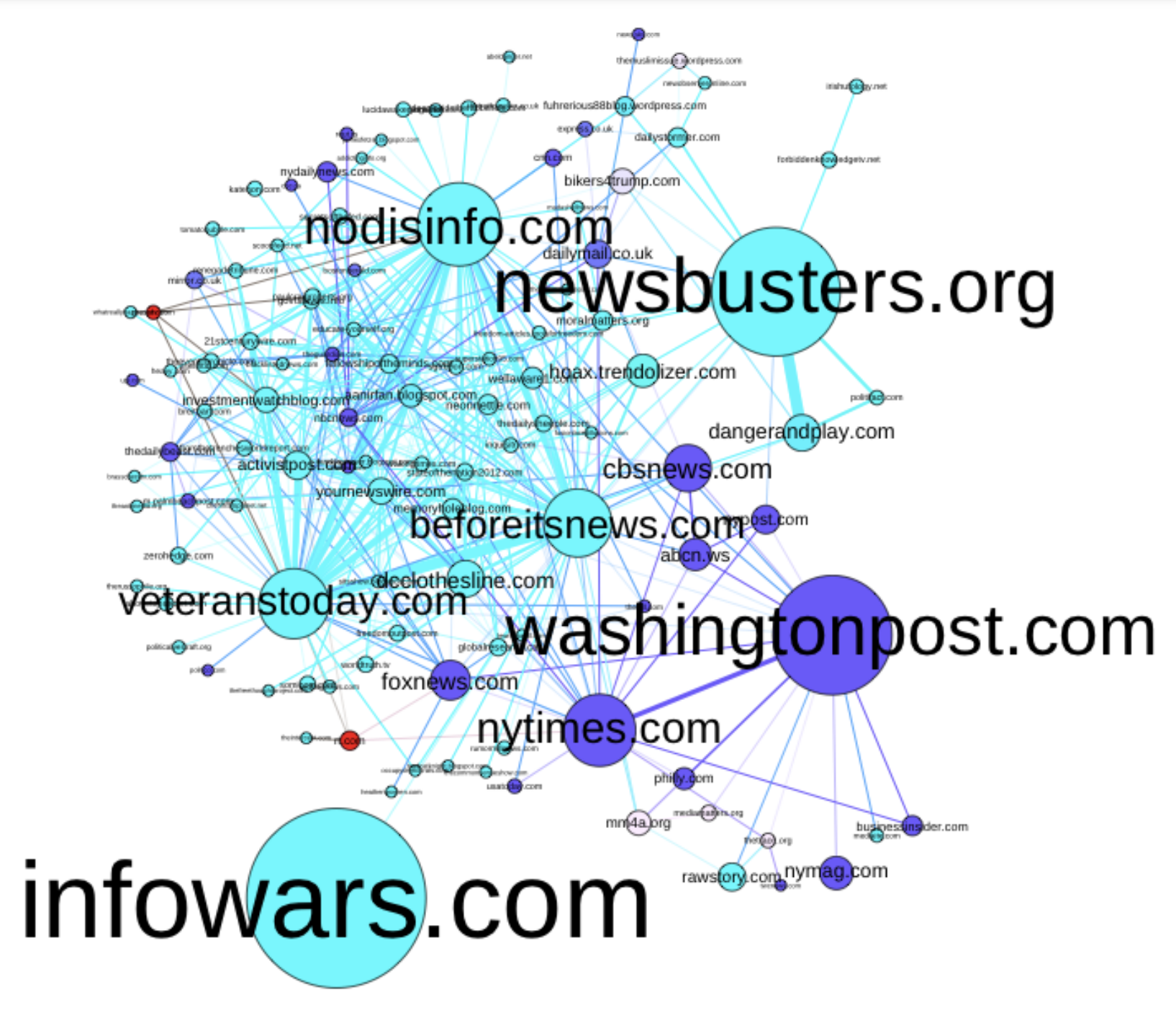Leah Pistorius
April 6, 2017
Researchers in HCDE Assistant Professor Kate Starbird’s Emerging Capacities of Mass Participation (emCOMP) Lab investigate how social media can help people respond to disaster events—an emerging field known as “crisis informatics.” Starbird and her students study social media activity during and after natural disasters, such as the Oso landslide in Washington state, as well as man-made crisis events, like the Boston marathon bombing and mass shooting incidents. Events where access to timely and accurate information can save lives.
“Over time, we noted that a similar kind of rumor kept showing up, over and over again, after each of the man-made crisis events — a conspiracy theory or “alternative narrative” of the event that claimed it either didn’t happen or that it was perpetrated by someone other than the current suspects,” Starbird writes in a blog post about her research.
To attempt to understand where these rumors start, and who (or what) is responsible for spreading them, in early 2016 Starbird and her students began collecting tweets mentioning shooting incidents in the United States that specifically indicated such shootings were false.

Figure 1. Domain Network Graph, Colored by Media Type. Purple = mainstream media; Aqua = alternative media; Red = government controlled media. Nodes are sized proportionally to the total number of tweets that linked to the domain, and they are connected when one user wrote different tweets citing each domain. Starbird, Kate. 2017. Examining the Alternative Media Ecosystem through the Production of Alternative Narratives of Mass Shooting Events on Twitter.
|
Using the data collected over the next nine months, the students built network graphs of the websites referenced in the tweets to examine the prevalence of certain sites and visualize the connections between them. The network graph, Figure 1, represents websites that were cited in tweets containing false information about shooting incidents in 2016.
“When we went to examine the data in Winter 2016, we were extremely confused by some of the intersections. Why were a handful of “Anonymous” accounts and GamerGaters connected with Pro-Palestinian accounts on one side and European white nationalists on another? Why were seemingly left-wing supporters of Wikileaks connecting with seemingly right-wing supporters of Donald Trump? And why did these groups come together to talk about alternative narratives of mass shooting events? It didn’t make sense. Yet.” Starbird writes.
The researchers found that more than half of the sites represented in their dataset tweeted support of conspiracy theories. Mainstream media sites are represented in the data from their tweets either debunking rumors, or their tweets of factual accounts of the events. Often, conspiracy theorists would use those factual tweets as evidence of a “mainstream media coverup.” Starbird writes: “In the case of the New York Times, the newspaper posted an article explicitly denying alternative narratives of the Orlando shooting event. This denial was then cited several times by those promoting those narratives — as even more evidence for their theory.”
The researchers then conducted an in-depth qualitative analysis of all of the domains represented in their data, uncovering what Starbird refers to as the alternative media ecosystem.
“We detected strong political agendas underlying many of these stories and the domains that hosted them, coding more than half of the alternative media sites as primarily motivated by a political agenda—with the conspiracy theories serving a secondary purpose of attracting an audience and reflecting or forwarding that agenda,” Starbird writes. “It quickly became clear that the U.S. left (liberal) vs. right (conservative) political spectrum was not appropriate for much of this content. Instead, the major political orientation was towards anti-globalism. Almost always, this orientation was made explicit in the content.”
Depending on the nature of the websites referenced in the tweets, the term “anti-globalist” stems from a range of sentiments, including anti-mainstream media, anti-immigration, anti-corporation, anti-U.S. government, and anti-European Union.
The researchers also discovered the presence of botnets, or automated accounts, in their dataset. Certain botnets controlled hundreds of accounts tweeting conspiracy theories and linking back to the same website, with the purpose of propagating politicized content. Using methods such as displaying a “real” profile picture (even if stolen from other people online), the team found certain botnets are able to bring actual twitter users into its network.
Starbird’s research into the alternative media ecosystem highlights the important role of today’s designers in building robust systems to be more resilient against disinformation.
Starbird will present her paper, “Examining the Alternative Media Ecosystem through the Production of Alternative Narratives of Mass Shooting Events on Twitter,” at the International Conference on Web and Social Media in May 2017. Her research into the spread of disinformation is ongoing.
Read Kate Starbird’s blog post describing her research, here, and find her full research paper, here.
Related coverage
- The web of conspiracy theorists that was ready for Donald Trump | The Washington Post
- UW professor: The information war is real, and we’re losing it | The Seattle Times
- How Misinformation Spreads On The Internet And How To Stop It | NPR
- This UW professor is tracking the rise of disinformation | KUOW
- Podcast: Facebook Makes a Stand. But can Fake News be stopped? | The Security Ledger